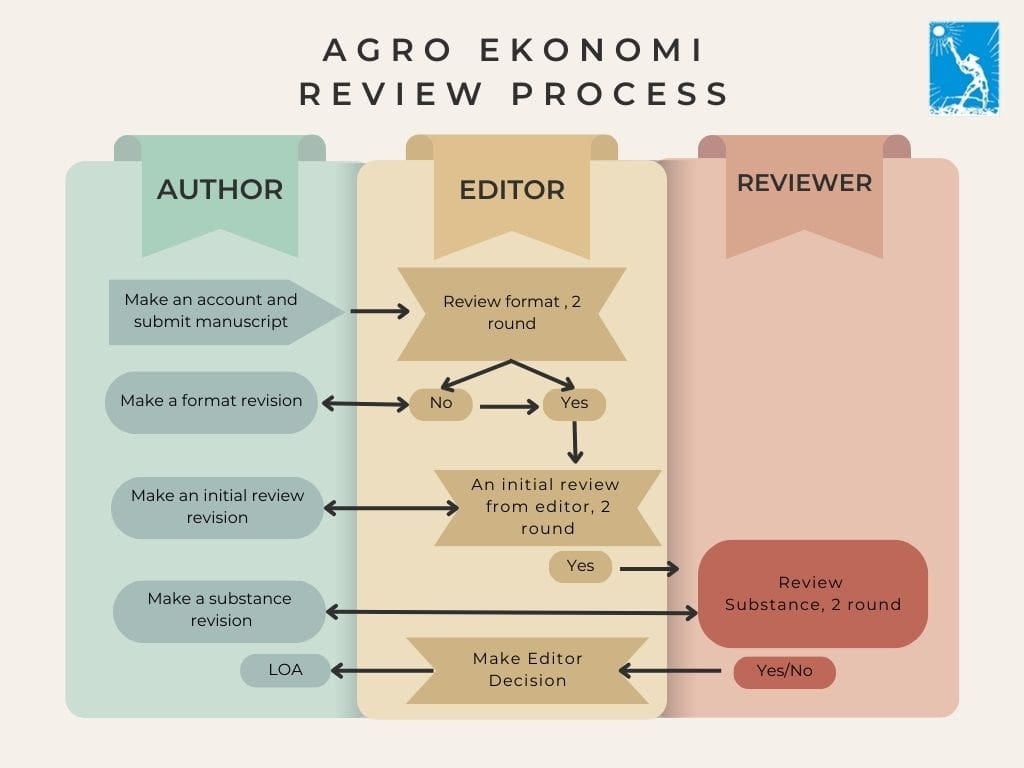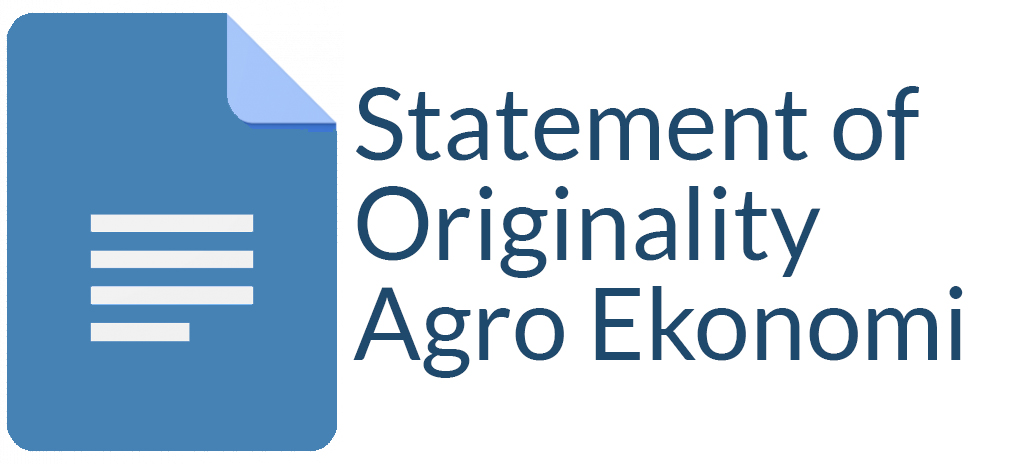ANALISIS SISTREM AGRIBISNIS INDUSTRI RUMAH TANGGA TAHU DAN TEMPE (Studi Kasus di Kabupaten Nganjuk)
Sumanto Sumanto(1*), Masyhuri Masyhuri(2), Sutrilah Sutrilah(3)
(1) Karyasiswa S2 Ekonomi Pertanian, Pascasarjana Universitas Gadjah Mada
(2) Jurusan Sosial Ekonomi Pertanian, Fakultas Pertanian Universitas Gadjah Mada
(3) Jurusan Sosial Ekonomi Pertanian, Universitas Gadjah Mada
(*) Corresponding Author
Abstract
In economic crisis condition tahu and tempe producer also face with soybean jump price, for example in luny 1998 soybean price Rp. 2.300,- / kg no more two months after move up Rp. 4.400,- / kg even rare in market, that condition could make direct effect in production and product price determine (consumer service)
Related with confinuoing tahu and tempe product examined agribusiness all system that limited use : (a) each 30 samples to soybean demand in home industry, (b) effeciency reachment efforts and production process each 30 samples and (c) each 100 samples at output demand in consument point.
Used data in analysis is primer data where three of data types taken proposively in Nganjuk regency area. Used analysis instrument is Shazam with Ordinary Least Square (OLS) methode, for confinuoing of analysis result well discussed to solve the phenomenon that three of agribusiness sub sector exist.
The soybean demand as the tahu raw material was inelastic (- 0.71802). Capital showed the most significant influence (0.71236), so did the plant's capacity (0.731060). The kedelai demand as the tempe raw material was inelastic (-0.85791). The tempe producer's capital was the most significant effect (0.51957) and the tempe processing plant's capacity had significant effect (0.64195).
From the tahu production it was obtained TER of 0:99999542549667, in which the soybean and the fuel had been allocated efficiently, water addition was needed where as the workers had to be reduced. From the tempe production it was obtained TER of 0.9993365823 and the human labor was allocated efficiently; additional soybean, fuel and machine labor were still required.
The tahu demand was inelastic (- 0.80468), and it was a normal good, wheat flour (-0.536080) was complementary good, whereas chicken (0.431800), lamb (0.789220), beef (0.615360) and fish (0.445760) were substituting goods. The tempe demand was elastic (-1.5042), the average consumption was 0.86 kg tempe per 100
consumers, with the price of Rp 3,267.- per kg. The chicken has the most significant effect (1.1847).
Keywords
Full Text:
PDFReferences
A. Purwanto, Analisa Biaya dan Keuntungan Industri Tahu dan Tempe di Lampung dan Jawa Barat, 1990
Anonymous, Pembangunan Pertanian yang Berkebudayaan Industri, 1997
B. Amang, Ekonomi Kedelai di Indonesia, 1996
Balai Penelitian Tanaman Pangan Sukamandi, . Pemasaran Tempe Kedelai dan Gude di Indonesia (Studi Kasus di Purwakarta, Jawa Barat), 1990
Biro Pusat Statistik Jakarta, SUSENAS tahun 1984 dan 1990, 1990
Gunawan, Penelitian dan Pengembangan Produksi Pangan, 1986
H. Esmara, Perencanaan Pembangunan di Indonesia, 1986
Karyadi D, Hermana, Simposium Pemanfaatan Tempe dalam Kesehatan, 1985
Masyhuri, Pengelolaan Agribisnis, 1992
Simatupang P, Comparative Advantage and Government Production Structure of Soybean Production in Indonesia, Comparative Advantage and Production Structures of the Livestock and Feedshiff Subsectors in Indonesia, 1990
Suharno, Mulyana, Industri Tahu dan Tempe dalam Amang. B, Ekonomi Kedelai di Indonesia, 1996
Sumarno, Teknologi Usahatani Kedelai dalam Pengembangan Kedelai, Potensi, Kendala dan Peluang. Penerbit Badan Penelitian dan Pengembang-an Pertanian, 1991
Article Metrics
Refbacks
- There are currently no refbacks.
Copyright (c) 2016 Agro Ekonomi

This work is licensed under a Creative Commons Attribution-ShareAlike 4.0 International License.
View My Stats











